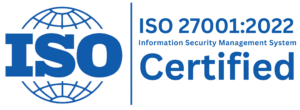REMOTE INFRASTRUCTURE MANAGEMENT
Maximize Your Data Center & Network Infrastructure to Shape Your Future
By assessing your current IT environment, leveraging its advantages, and integrating our upgrades, we aspire to implement an infrastructure foundation that can expand in-step with your enterprise.
Remote Infrastructure Management
Empower your business with seamless remote infrastructure management services. Technotrust experienced team handles the monitoring, maintenance, and optimization of your IT infrastructure, ensuring high availability, security, and performance. Enjoy the benefits of a reliable and agile infrastructure, reduced downtime, and enhanced cost-efficiency, all while freeing up your resources to focus on strategic initiatives.
The goal of application management is to ensure that applications are reliable, secure, and meet the needs of users and stakeholders. This involves managing the technical aspects of applications, such as performance, scalability, and availability, as well as ensuring that applications are aligned with business goals and objectives.

Benefits of Remote Infrastructure Management
Enhanced Security
Remote infrastructure management offers improved security measures compared to traditional on-site infrastructure management. With centralized monitoring and management tools, businesses can implement robust security protocols, access controls, and encryption measures. Remote management also reduces physical security risks associated with on-site infrastructure, such as theft or unauthorized access to servers and data centers.
Increased Efficiency
Remote infrastructure management enables businesses to streamline their operations and improve efficiency. With remote access to infrastructure resources, IT teams can proactively monitor, diagnose, and resolve issues remotely, minimizing downtime and reducing response times. This leads to faster problem resolution, improved system availability, and enhanced overall productivity.
Scalability and Flexibility
Remote infrastructure management provides businesses with the flexibility to scale their infrastructure resources up or down as needed. With remote access and management capabilities, organizations can easily add or remove servers, storage, and networking components without the limitations imposed by physical on-site infrastructure. This scalability allows businesses to adapt quickly to changing demands and optimize resource allocation.
Cost Savings
Remote infrastructure management allows businesses to significantly reduce costs associated with on-site infrastructure management. By leveraging remote monitoring and management tools, businesses can eliminate the need for dedicated on-site IT staff, minimize equipment maintenance expenses, and avoid costly travel expenses for troubleshooting and maintenance.
Our Remote Infrastructure Management Services
Application management can involve managing a single application or an entire portfolio of applications. It requires a range of skills and knowledge, including software development methodologies, project management, quality assurance, and technical support.
Some key activities involved in application management include:
- Planning and development: This involves defining requirements, developing a project plan, and designing and building the application.
- Testing and quality assurance: This involves testing the application to ensure that it meets quality standards and works as intended.
- Deployment and configuration: This involves installing the application in the target environment and configuring it to meet user and system requirements.
- Monitoring and support: This involves monitoring the application to ensure that it is performing as expected and providing support to users as needed.
- Maintenance and upgrades: This involves maintaining the application over time, including applying patches and updates to address bugs and security vulnerabilities.
Effective application management is essential for ensuring that applications are reliable, secure, and meet the needs of users and stakeholders. It requires a combination of technical expertise, project management skills, and an understanding of business goals and objectives.


